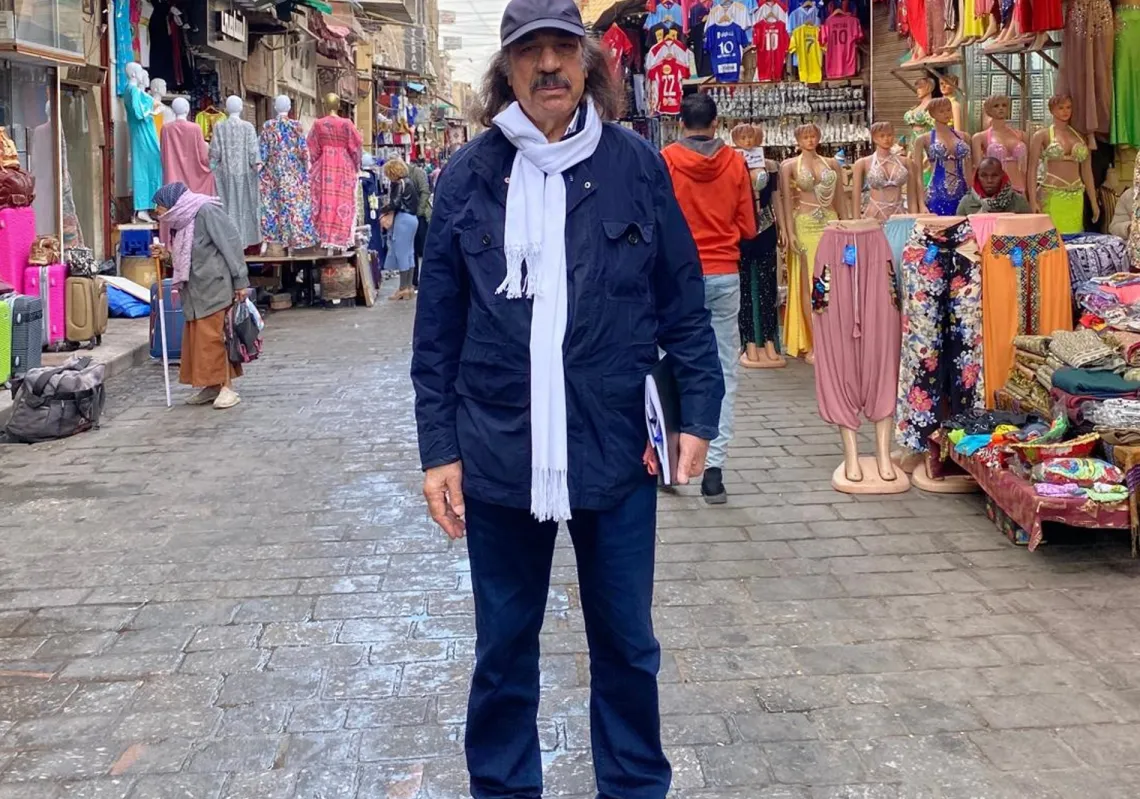When Nada Koussa represented Lebanon at the 2024 Miss Universe pageant, her outfit, styled by Lebanese fashion designer Joe Challita, was crowned with a tall, conical headdress. It brought back a fashion accessory called the tantour—a head covering worn by women, positioned vertically on the head, with a scarf attached at the top in the shape of a semi-circle, which cascades down the back and extends to the ground.
Centuries ago, the tantour was worn by princesses to distinguish themselves from the rest of the populace. As such, the tantour has long been associated with nobility. Scottish diplomat and traveller David Urquhart offered a vivid description of the tantour in his 1860 book, Lebanon (Mount Syria): History and Memoir:
“As I turned the corner of a house, I caught sight of six young women standing gracefully atop the rocks, their tantours towering high, signifying their noble lineage. The weighty embellishments of their garments brushed against the ground with a soft rustling sound."
“Their flowing white veils billowed like banners, revealing radiant, smiling faces. Their heads gleamed with an abundance of jewels and flowers, while their necks, resembling the idols of Hindu temples, shimmered in golden brilliance. Dressed in reddish-brown robes adorned with twinkling star-like embellishments and edged with metallic lace, they exuded an ethereal elegance.”
In the History of Lebanese Costumes, Majid Bou Tannous describes the tantour as "resembling an ibex horn typically crafted from silver or copper and measuring around 40cm or more in height, often adorned with intricate engravings or sacred inscriptions." For princesses, however, the tantour was always made out of gold and adorned with jewels and elaborate motifs, he writes.
The headdress can be traced back to Lebanon's Ma'n dynasty circa the 15th-17th century, but gained widespread popularity in the 19th century. Tannous explains:
"Princess Khassikiya, the wife of Emir Fakhr al-Din II, who accompanied him on his journey to Tuscany, appears in several portraits wearing the tantour. Noblewomen like her actually wore the tantour continuously, day and night, never removing it, to the extent that they had to push their beds away from the wall as they slept with it on."

'Till death to us part'
Lahad Khater, in the second volume of his book Lebanese Customs and Traditions, recounts how the Orientalist Father De Geran explained that "Women never parted with the tantour, whether in health or illness, not even on their deathbed. The headdress was often sold after a woman’s passing, with the proceeds used to pay for her funeral."
Dr. Abdul Aziz Hamid Saleh noted in his book Arab Costumes Through the Ages that the tantour was especially common among Maronite and Druze women, particularly in Mount Lebanon and the western part of Syria. This is according to travellers who visited Lebanon in the past three centuries, noting their observations.
In Beirut and Lebanon a Century and a Half Ago, French diplomat Henri Guys said, “the tantour remained a part of Christian and Druze women’s attire until the mid-1840s. It later faded out because it became too expensive for everyday people to afford."
1960s revival
For his part, Romeo Lahoud was credited with reviving the cultural tradition of the tantour when he began featuring it in his musical theatre performances. His sister, fashion designer Babo Lahoud Saadeh, meticulously crafted the tantours, carefully selecting the inlaid gemstones and pearls.
The iconic Lebanese songstress Sabah famously wore it at the Baalbeck International Festival in 1963, performing in the musical Al-Shallal. The tantour was featured in several of his other productions, including Mawal, Ataba, and Mejana, at Venice Theatre in the 1960s. Lahoud later brought elements of these performances to the Olympia Theatre in Paris and other musical tours throughout France and Belgium.
In 1978, Lebanese singer Salwa Al-Katrib wore the tantour in the musical, Princess Zumurrud, and in 1987, she donned a crown-like headpiece in the musical, Lebanese Nights, at the Byblos Festival.
For his part, Challita has been a champion of preserving Lebanese cultural heritage. As such, he created a digital platform called Lebanese Fashion History to preserve, document and archive both the tangible and intangible aspects of Lebanese traditional dress.
He was also able to take Lebanese culture to the international stage by crafting the tantour that Miss Lebanon donned at the Miss Universe Pageant. His reinvention of the tantour "took many by surprise", he says. If his intention was to create a new buzz around the beauty of Lebanese culture and fashion's rich history, he certainly succeeded.











